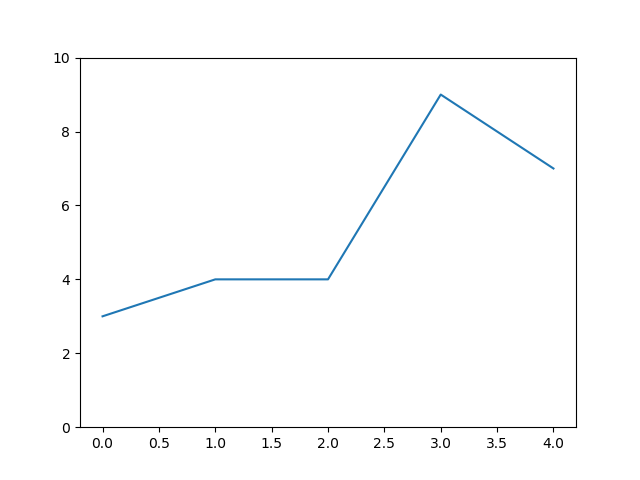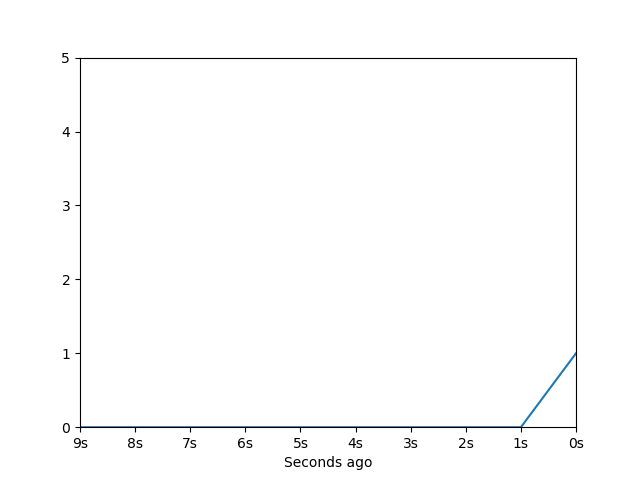To draw a continuous set of random line plots, you would need to use animation in matplotlib:
import numpy as np
import matplotlib.pyplot as plt
import matplotlib.animation as animation
fig, ax = plt.subplots()
max_x = 5
max_rand = 10
x = np.arange(0, max_x)
ax.set_ylim(0, max_rand)
line, = ax.plot(x, np.random.randint(0, max_rand, max_x))
def init(): # give a clean slate to start
line.set_ydata([np.nan] * len(x))
return line,
def animate(i): # update the y values (every 1000ms)
line.set_ydata(np.random.randint(0, max_rand, max_x))
return line,
ani = animation.FuncAnimation(
fig, animate, init_func=init, interval=1000, blit=True, save_count=10)
plt.show()

The idea here is that you have a graph containing x and y values. Where xis just a range e.g. 0 to 5. You then call animation.FuncAnimation() which tells matplotlib to call your animate() function every 1000ms to let you provide new y values.
You can speed this up as much as you like by modifying the interval parameter.
One possible approach if you wanted to plot values over time, you could use a deque() to hold the y values and then use the x axis to hold seconds ago:
from collections import deque
import numpy as np
import matplotlib.pyplot as plt
import matplotlib.animation as animation
from matplotlib.ticker import FuncFormatter
def init():
line.set_ydata([np.nan] * len(x))
return line,
def animate(i):
# Add next value
data.append(np.random.randint(0, max_rand))
line.set_ydata(data)
plt.savefig('e:\\python temp\\fig_{:02}'.format(i))
print(i)
return line,
max_x = 10
max_rand = 5
data = deque(np.zeros(max_x), maxlen=max_x) # hold the last 10 values
x = np.arange(0, max_x)
fig, ax = plt.subplots()
ax.set_ylim(0, max_rand)
ax.set_xlim(0, max_x-1)
line, = ax.plot(x, np.random.randint(0, max_rand, max_x))
ax.xaxis.set_major_formatter(FuncFormatter(lambda x, pos: '{:.0f}s'.format(max_x - x - 1)))
plt.xlabel('Seconds ago')
ani = animation.FuncAnimation(
fig, animate, init_func=init, interval=1000, blit=True, save_count=10)
plt.show()
Giving you:

 REGISTER FOR FREE WEBINAR
X
REGISTER FOR FREE WEBINAR
X
 Thank you for registering
Join Edureka Meetup community for 100+ Free Webinars each month
JOIN MEETUP GROUP
Thank you for registering
Join Edureka Meetup community for 100+ Free Webinars each month
JOIN MEETUP GROUP